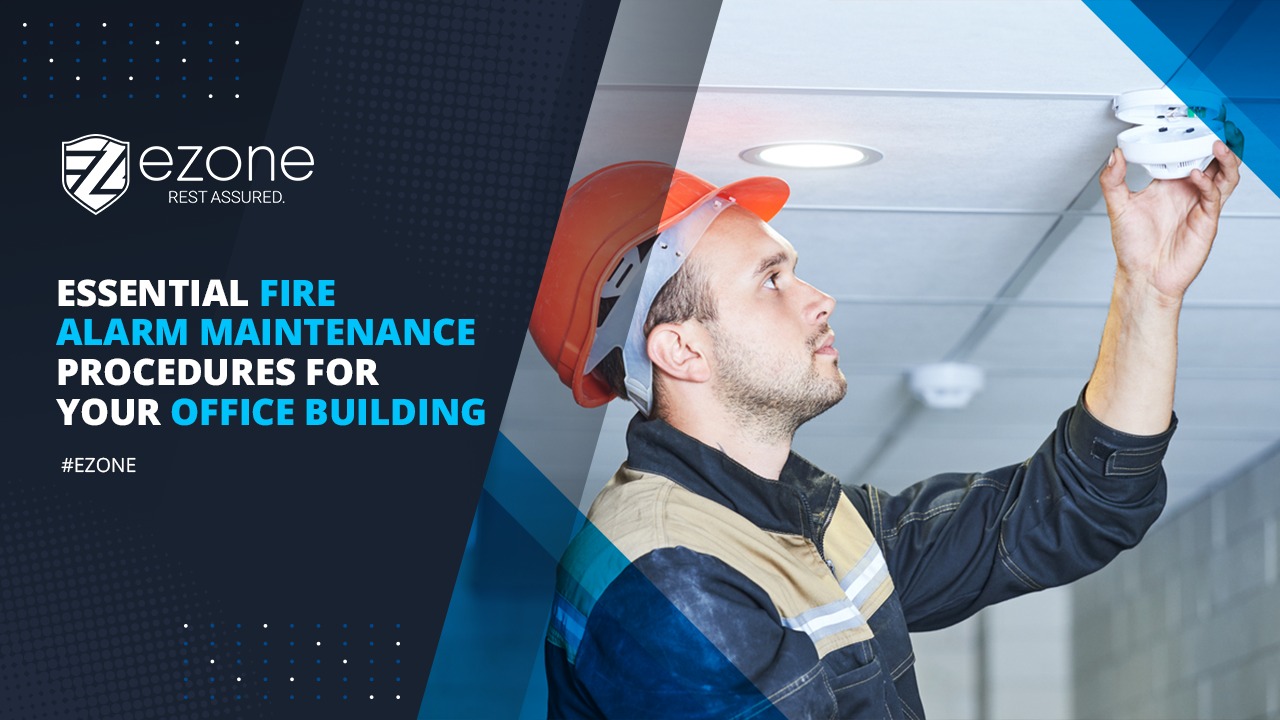How effective is the fire alarm in your office building? You may not even be aware if you aren’t doing regular fire alarm maintenance.
Installing a cutting-edge, extremely reliant fire detection system in your office is only the start. Though these systems can instantly identify fire and smoke threats, they are only efficient in protecting lives if properly maintained.
Fire alarm inspection and maintenance must always be a priority, whether the system is over a decade old or recently installed. The inspection and maintenance should be done only by authorised personnel and as per the specified guidelines and standards(IS or NFPA codes).
Risk of fire fighting system failure and ineffectiveness
According to statistics, 70% of fire deaths occur in places with no smoke alarms or non working smoke alarms. In addition, the presence of a working fire alarm reduces the risk of death in a fire by 50%.
The threat posed by an inadequate or malfunctioning fire system can be enormous. For example, faulty systems generate nuisance alerts, causing the systems to be turned off.
If fire alarm systems are not properly inspected and maintained, false alarms or no alerts may occur in case of an emergency.
Maintenance of Fire Alarm System
The risks of an automatic fire detection system operating incorrectly or ineffectively can be decreased if a sound inspection and maintenance programme is developed and followed in line with the standard, i.e. IS 2189. According to the Indian Standard, the inspection & maintenance of a fire alarm system are divided into 4 parts:
- Daily
A check should be made every day to ascertain that the panel indicates normal operation; if not, any fault indicated is recorded in the log book and receives urgent attention.
- Weekly
- a) Once a week, at least one trigger device or end-of-line switch on one zone circuit should be operated to test the ability of the control and indicating equipment to receive a signal and sound the alarm and operate other warning devices.
- b) A visual examination of the battery and connection should be made to ensure they are in good condition.
- Monthly
- a) Entries in the log book since the previous inspection should be checked.
- b) Batteries and their connections should be examined.
- c) The alarm function of control and indicating equipment should be checked by the operation of a trigger device.
- d) A visual inspection should be made that structural or occupancy changes have not affected the requirements for the sting of trigger devices(manual call points, smoke detectors and heat detectors).
- Quarterly / Annually
- a) Operation of at least 20% of the detectors in an installation should be checked each year, and the selection should be done so that all the detectors in an installation shall have been checked once every 5 years – replacement by a new one.
- b) Each detector should be checked for correct operation using specified test equipment and method.
- c) Visual inspection should confirm that all cable fittings and equipment are secure.
- d) The electrical installation should be tested at least once every three years at the annual inspection.
Neglecting the test & repair of the alarm system can result in non-functioning that leads to loss of life, physical injuries, and extensive property damage. A fire prevention system that is damaged or poorly maintained can have the same impact as not having one at all, increasing the danger of a major, uncontrolled fire. If you want the installation or maintenance of fire safety systems at your property, we at Ezone are experts in providing cutting-edge fire safety solutions.
Call us at 9848398483 Or visit www.ezonesecurity.com to protect your people and assets.
